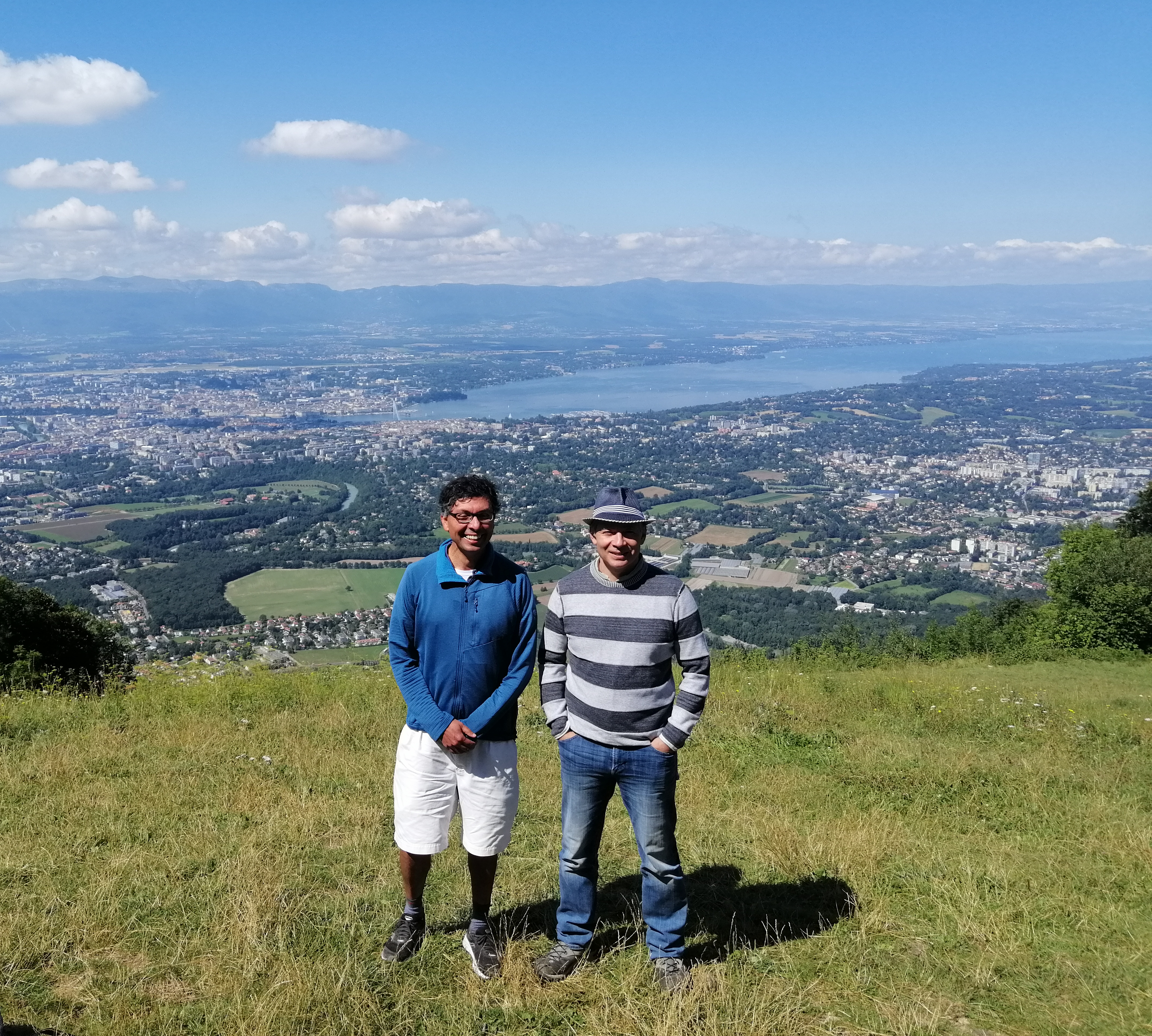Schedule
Monday [23.08.2021]
09:15 - 10:30 Hausel
11:00 - 12:15 Bérczi
14:45 - 16:00 Moreira
Tuesday [24.08.2021]
09:15 - 10:30 Mellit I
11:00 - 12:15 Zvonkine I
14:45 - 16:00 Lian
Wednesday [25.08.2019]
09:15 - 10:30 Mellit II
11:00 - 12:15 Pandharipande
14:45 - 16:00 Zvonkine II
Thursday [26.08.2019]
09:15 - 10:30 Holmes
Titles and Abstracts
G. Bérczi
Integration over Hilbert scheme of points in higher dimensions
T. Hausel
Explicit Hitchin system on Lagrangian upward flows
D. Holmes
The DR cycle in the logarithmic Chow ring of the moduli of curves II
C. Lian
Tevelev degrees
I will report on ongoing work in various directions on the following problem. Let X be a smooth projective variety, x_1,..., x_n general points, beta a curve class on X and (C,p_1,...,p_n) a general smooth pointed curve. Then, how many maps f:C -> X in class beta
are there satisfying f(p_i)=x_i? [geometric Tevelev degrees].
The natural analog of this problem in Gromov-Witten theory [virtual Tevelev degrees] has a simple answer in terms of the quantum cohomology of X, yielding formulas in some cases (Buch-Pandharipande). While the geometric and virtual counts are expected to agree in the presence of sufficient positivity (work in progress with Pandharipande), already for projective spaces, the geometric and virtual counts of maps f of low degree diverge, and the geometric Tevelev degrees are more difficult to access. For X=P^1, the picture is essentially complete (joint with Farkas, after Tevelev and Cela-Pandharipande-Schmitt), and for higher dimensional projective spaces, one can employ the moduli space of complete collineations to obtain formulas in terms of Schubert calculus in general (in progress).
A. Mellit
Tautological classes and Lefschetz properties I and II
I will introduce a class of varieties attached to surfaces with certain markings. This includes usual character varieties, as well as so-called braid varieties whose cohomology is related to the Khovanov-Rozansky homologies of knots. The fact that these varieties are attached to surfaces allows us to construct certain tautological classes in their cohomology. One of them is a certain 2-form which turns out to always satisfy a Lefschetz property. As applications we deduce q-t symmetries in two settings: in the context of character varieties conjectured by Hausel-Letellier-Rodriguez-Villegas, in the context of knot invariants conjectured by Dunfield-Gukov-Rasmussen (joint work with Gorsky and Hogancamp). The tautological classes together with the Lefschetz operator generate an algebra, conjecturally containing the Lie algebra of Hamiltonian vector fields on the plane, which in its turn contains the positive half of the Virasoro algebra. We will discuss how this may help to understand the cohomology ring (ongoing project with Tamas Hausel).
M. Moreira
Virasoro constraints in the Hilbert scheme of points of a surface
The cohomology of the Hilbert scheme of points of a surface is a much studied object. For example, it is known to be generated as a ring by descendents. In this talk I'll show a relation amongst descendents on the top cohomology of the Hilbert scheme. This new relation is a consequence of the Virasoro constraints for the theory of stable pairs of a 3-fold (joint with Oblomkov, Okounkov and Pandharipande). I'll explain how the proof uses the PT/GW correspondence to prove the relation when the surface is toric and how to use universality results to extend it to every simply-connected surface. In the end I'll discuss new directions, in particular recent work by Dirk van Bree proposing a generalization to moduli of stable higher rank sheaves.
R. Pandharipande
The DR cycle in the logarithmic Chow ring of the moduli of curves I
D. Zvonkine
Cohomological field theories for principal bundles I and II
We define cohomological field theories for families of nodal curves carrying a principal G-bundle for a reductive Lie group G. The case G = C*, corresponding to families of curves with line bundles, already contains most new interesting features. We define an analog of Givental's group action on such G-CohFTs; the group is somewhat larger than in the case of ordinary CohFTs. We also suggest an analog of Teleman's classification theorem for semisimple G-CohFTs. At this stage the proof is not thoroughly checked and depends on a generalization of the Madsen-Weiss theorem that is known for G = C*, but not for a general reductive groups. The classification is very similar to the case of ordinary CohFTs. The semisimple G-CohFTs form an orbit of the Givental group action, however the action now has a large stabilizer so that the orbit is not isomorphic to the group itself. This is work in progress with A. Okounkov and R. Pandharipande.

